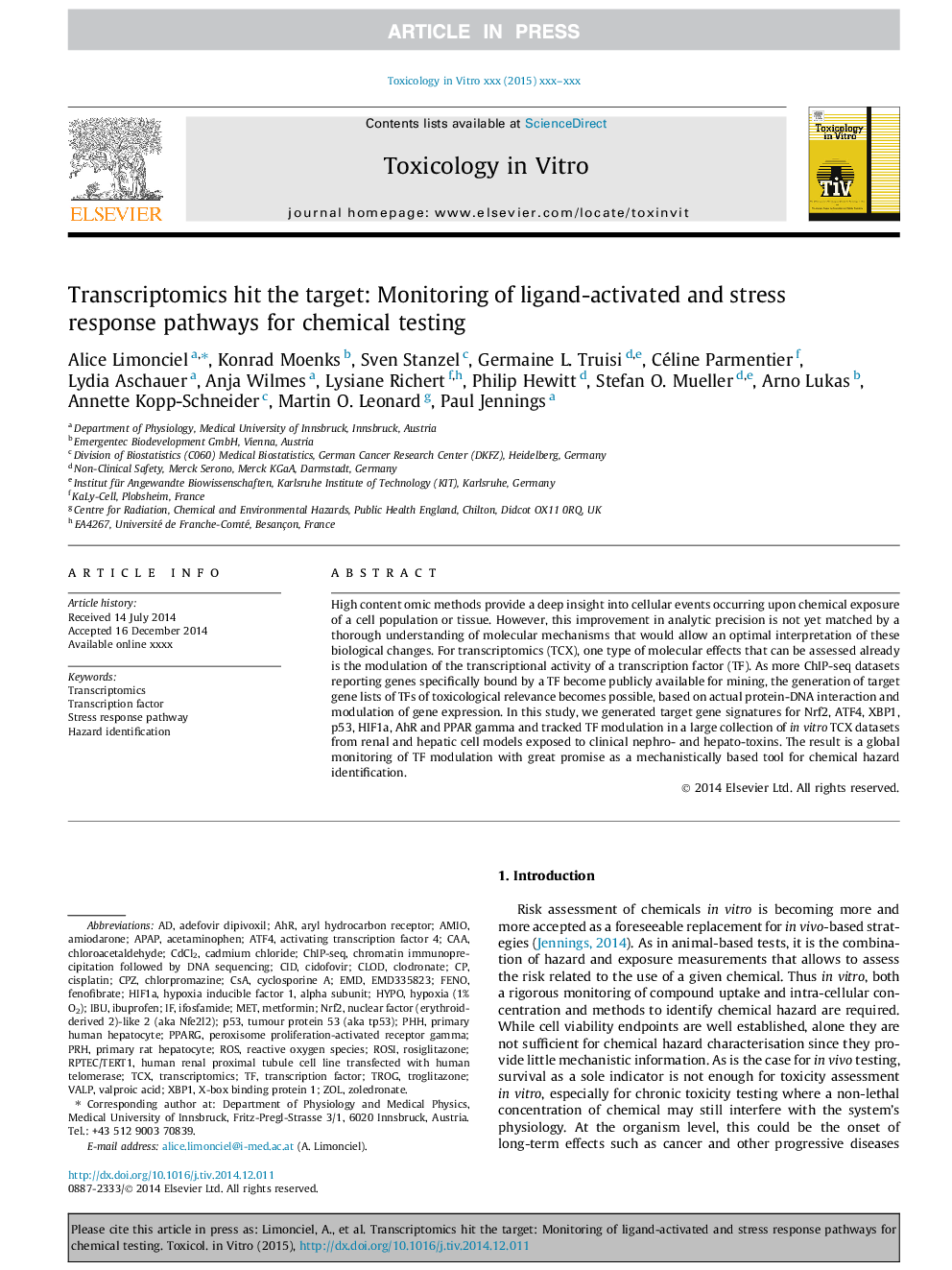| Article ID | Journal | Published Year | Pages | File Type |
|---|---|---|---|---|
| 5861283 | Toxicology in Vitro | 2015 | 12 Pages |
Abstract
High content omic methods provide a deep insight into cellular events occurring upon chemical exposure of a cell population or tissue. However, this improvement in analytic precision is not yet matched by a thorough understanding of molecular mechanisms that would allow an optimal interpretation of these biological changes. For transcriptomics (TCX), one type of molecular effects that can be assessed already is the modulation of the transcriptional activity of a transcription factor (TF). As more ChIP-seq datasets reporting genes specifically bound by a TF become publicly available for mining, the generation of target gene lists of TFs of toxicological relevance becomes possible, based on actual protein-DNA interaction and modulation of gene expression. In this study, we generated target gene signatures for Nrf2, ATF4, XBP1, p53, HIF1a, AhR and PPAR gamma and tracked TF modulation in a large collection of in vitro TCX datasets from renal and hepatic cell models exposed to clinical nephro- and hepato-toxins. The result is a global monitoring of TF modulation with great promise as a mechanistically based tool for chemical hazard identification.
Keywords
FeNOCAANrf2ChIP-SeqZoledronateCdCl2APAPCPZPRHXBP1IfosfamidePHHPPARGAMIORPTEC/TERT1hypoxia inducible factor 1, alpha subunitTCXTROGAHREMDp53ATF4CIDprimary human hepatocyteHIF1aROSadefovir dipivoxilAmiodaroneAcetaminophenCSATroglitazoneROSIrosiglitazoneZOLCidofovircisplatinCyclosporine AHazard identificationTranscription factoractivating transcription factor 4FenofibrateIbuprofenIbuMetforminTranscriptomicsMETPrimary rat hepatocytehypoValproic acidX-box binding protein 1ClodronateChloroacetaldehydechlorpromazineCadmium chlorideReactive oxygen speciesaryl hydrocarbon receptor
Related Topics
Life Sciences
Environmental Science
Health, Toxicology and Mutagenesis
Authors
Alice Limonciel, Konrad Moenks, Sven Stanzel, Germaine L. Truisi, Céline Parmentier, Lydia Aschauer, Anja Wilmes, Lysiane Richert, Philip Hewitt, Stefan O. Mueller, Arno Lukas, Annette Kopp-Schneider, Martin O. Leonard, Paul Jennings,
